(Un)Necessary Optimism
Inflation rate is finally released, and the salary and wage hikes along with it. The raise for public employees is set at nearly 50%, and for retirees at nearly 40%.
As a matter of fact, 2023 ended with a slightly higher inflation rate than 2022’s. And the 2023 CPI figure was moderately lower than the Central Bank’s forecast of 65%, which was modified three times. As the monthly inflation rate, which was announced lower than expected, raised concerns about TurkStat’s integrity again, banking and finance community’s bombardment of positivity did not go unnoticed. Apparently, they are trying to sell happy scenarios, in which they do not even believe, so that the previous economic team does not return to office.
Years ago, the general manager of a large private bank had made the following statement, “Currency basket will not be allowed to exceed TRY 5.” Today’s basket rate, which is over TRY 30, shows us how pointless and career-damaging such statements can be. Recently, making the same mistake, national and international banks have been saying that one dollar will be 33 Turkish liras by the end of the year. It is only natural that these banks, which are still struggling in terms of resource composition and debt-receivable maturity, make such statements. Private banks voice their hopes and demands rather than voicing their real expectations and potential risks, or they might be under the illusion that the Central Bank’s actions to replenish reserves led to further increase in exchange rates, but there is no demand for dollars from the market. I, on the other hand, think that there is still demand for foreign currency despite the high interest rates, and depositors will not truly return to TRY accounts unless deposit interest rates surpass 50%.
We all know some mathematics. “If inflation turns out to be around 3% every month, the year-end inflation rate will be 36%”, some say. This is plain logic. Let us remember that we have seen high rates throughout last year, except for the illogical CPI rate around 0% in May. Therefore, we will continue to experience last year’s high levels until August. According to bankers’ calculations, inflation rate will fall to 60% towards April, then go up again and exceed 65% in June.
Based on this assumption, it’s not until October that inflation in Turkey will enter a rapid downward trend. The important thing is not whether this assumption will hold, but what will happen until then. Reducing interest rates before inflation falls down will surely make the exchange rates move up again. With this fact in mind, we could say that the consistency of the assumptions hopefully put forward by private banks against the reality is utterly questionable.
While depositors will try to tie up their savings in long-term high-interest accounts before interest rates are brought down, they will not forget to put aside foreign currency either as a precaution. Also, pricing behaviour is unlikely to improve in the face of high inflation, at least not until October. So far, none of the initial inflation targets have been achieved. I expect all of them to be revised after the elections.
It is crucial that financial institutions should be prepared for an untimely rate cut and to develop scenarios against a sudden rise in exchange rates, especially by taking into account the fact that interest rates are kept artificially low despite the market reality is causing inflationary effects. Untimely rate cuts will sooner or later lead to further rise in interest rates again.

